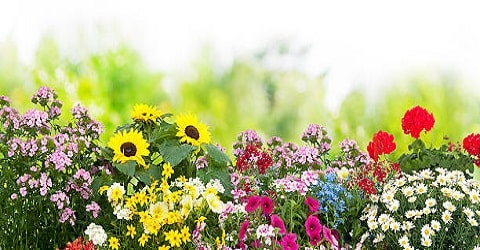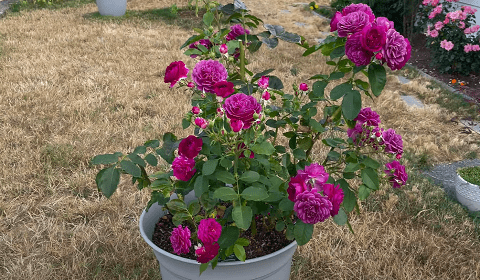Growing healthy roses requires attention to detail and a solid understanding of their specific needs. From selecting the right variety to nurturing them, and rose gardening ideas through proper care techniques, cultivating vibrant roses can be immensely rewarding.
This guide aims to provide essential tips for enthusiasts looking to enhance their rose-growing skills. By addressing factors such as soil quality, watering routines, pruning methods, and pest management, gardeners can ensure their roses thrive and bloom abundantly.
Whether you’re a novice or a seasoned gardener, implementing these tips will help you foster robust and beautiful roses that add color and fragrance to your garden landscape.
Table of Contents
Growing Healthy Roses
Roses transcend mere floral beauty; they embody love, grace, and elegance. Cultivating healthy roses demands a blend of patience, meticulous care, and profound understanding.
Whether you’re an experienced horticulturist or a novice, this guide offers invaluable insights to nurture resplendent roses that captivate with their vibrancy.
From selecting the right variety to mastering watering techniques, pest control, and growing healthy roses, each tip is tailored to empower you on your journey to floral mastery.
With dedication and application of these principles, your garden will flourish with roses that become the envy of the neighborhood, radiating beauty and spreading the timeless message of love and refinement.
1. Select the Right Variety
Before delving into the art of growing roses, it’s crucial to embark on your journey armed with the knowledge of selecting the ideal variety tailored to your specific climate and soil composition.
Roses exhibit an extensive array of types, ranging from the elegant hybrid teas to the abundant floribundas, majestic grandifloras, graceful climbers, and growing healthy roses.
Thorough research into these diverse varieties is paramount, enabling you to make informed choices that align harmoniously with the nuances of your local conditions.
By meticulously matching the characteristics of each rose type to your environment, you lay the foundation for a flourishing garden adorned with the splendor of these exquisite blooms.
2. Site Selection or Location
To cultivate a growing healthy rose and commercial rose farming, prioritize their environmental needs. Opt for sunny spots with well-drained soil, ensuring they receive a minimum of six hours of sunlight daily.
Selecting areas with proper drainage is essential to prevent root rot, avoiding waterlogged soil. Additionally, ample air circulation helps stave off diseases, necessitating adequate spacing between plants.
Overcrowded areas should be avoided to promote optimal growth conditions. By adhering to these guidelines, gardeners can create an ideal setting for roses to flourish, fostering robust plants with vibrant blooms.
3. Soil Preparation
Before planting your roses, it’s crucial to prepare the soil meticulously for growing healthy roses. Integrate organic matter like compost or well-rotted manure to enrich the soil, fostering better structure, fertility, and drainage.
Roses flourish in slightly acidic soil, ideally with a pH range of 6.0 to 6.5. Conduct a soil test to gauge its acidity and adjust it as necessary to create the optimal environment for your roses to thrive.
This foundational step sets the stage for robust growth and vibrant blooms, ensuring that your roses receive the nutrients and conditions they need to flourish and grace your garden with their beauty.
4. Planting
Planting roses requires careful attention to detail to ensure their successful establishment and growth, including growing healthy roses. Begin by digging a hole that is twice as wide and deep as the root ball, providing ample space for the roots to spread out.
With gentle hands, loosen the roots to encourage healthy growth and place the plant in the hole, ensuring the bud union is at or slightly above ground level. Backfill the hole with soil, pressing it gently around the roots to eliminate air pockets.
Finally, water the newly planted rose thoroughly to settle the soil and provide essential hydration for the roots. This method sets the foundation for healthy and thriving roses in your garden.
5. Watering
Proper watering is essential for the health of your roses, especially for growing healthy rose bushes. Water deeply and thoroughly, ensuring the soil is moist but not waterlogged, as excessively damp conditions can lead to root rot.
Avoid overhead watering, as wet foliage can promote fungal diseases. Instead, water at the base of the plant to keep the leaves dry. During hot, dry weather, increase the frequency of watering to prevent stress on the plants.
Mulching around the base of the roses can help retain moisture and regulate soil temperature. By following these watering guidelines, you can provide your roses with the hydration they need to thrive and bloom vibrantly while ensuring a growing healthy rose garden.
6. Fertilizing
Roses, being heavy feeders, thrive with consistent fertilization during their growth phases. Opt for a balanced fertilizer tailored for roses, adhering closely to the recommended application rates and schedules provided on the product label.
Alternatively, organic alternatives like compost or fish emulsion serve as exceptional nourishment sources for these delicate blooms. By supplying the necessary nutrients, you promote robust growth, abundant flowering, and overall plant health, thus ensuring the growing healthy rose.
Remember, regular fertilization not only enhances the aesthetic appeal of your roses but also fortifies their resilience against pests and diseases. Embracing this practice ensures your roses flourish with vitality, infusing your garden with timeless beauty and fragrance throughout the blooming season.
7. Pruning
Pruning plays a vital role in preserving the vitality and form of your roses, essential for growing healthy roses. It involves the careful removal of dead, diseased, or injured wood, as well as any branches that may intersect and potentially harm the plant.
Timing is crucial; performing pruning in late winter or early spring, before the onset of new growth, sets the stage for healthy development. Additionally, after the initial bloom, a follow-up prune can stimulate further flowering by promoting new growth.
By adhering to these practices, gardeners not only maintain the structural integrity of their rose bushes but also encourage continuous blooming, ensuring a steady supply of beautiful blossoms throughout the growing season.
8. Pest and Disease Control
When nurturing roses, vigilance against common pests like aphids, thrips, and Japanese beetles, as well as fungal ailments like powdery mildew and black spot, is crucial for growing healthy roses. Regular inspections are key to spotting signs of trouble early on, allowing for swift intervention.
Employ cultural practices such as adequate spacing, ensuring good air circulation, and maintaining cleanliness to deter pest infestations and disease outbreaks. By adhering to these proactive measures, you can significantly minimize the risk of encountering pest and disease issues in your rose garden.

This proactive approach not only safeguards the health of your roses but also contributes to their overall vitality and longevity, ensuring a flourishing and beautiful display year after year.
9. Mulching
Mulching plays a vital role in maintaining optimal conditions for growing healthy roses. By conserving moisture, suppressing weeds, and regulating soil temperature, mulch provides a nurturing environment for healthy rose growth.
To implement this technique effectively, spread a layer of organic mulch like shredded bark, compost, or straw around the base of your roses, ensuring it doesn’t form mounds against the stems. As the mulch decomposes, it enriches the soil with valuable organic matter, gradually enhancing its structure and fertility.
Incorporating mulching into your rose care routine not only promotes immediate benefits but also contributes to long-term soil health, supporting the sustained vitality of your rose garden.
10. Winter Protection
In colder climates, safeguarding roses during winter is paramount to shield them from freezing temperatures and ensure their continued health. Following the onset of the initial hard frost, it’s crucial to employ protective measures.
One effective method is to mulch around the base of the plants using a layer of straw or shredded leaves, which acts as insulation for the roots, preserving their health and promoting the growth of healthy roses. Additionally, wrapping the canes with burlap offers further protection against harsh winter conditions. Another option is applying a protective spray, which forms a barrier to mitigate potential damage.
By implementing these strategies, gardeners in colder regions can enhance the chances of their roses surviving winter and thriving once spring arrives.
You can grow healthy, vibrant roses that will bring beauty and joy to your garden for years to come. With proper care and attention, your roses will reward you with an abundance of blooms that are as stunning as they are fragrant. So roll up your sleeves, dig in the dirt, and get ready to enjoy the timeless beauty of these beloved flowers.



